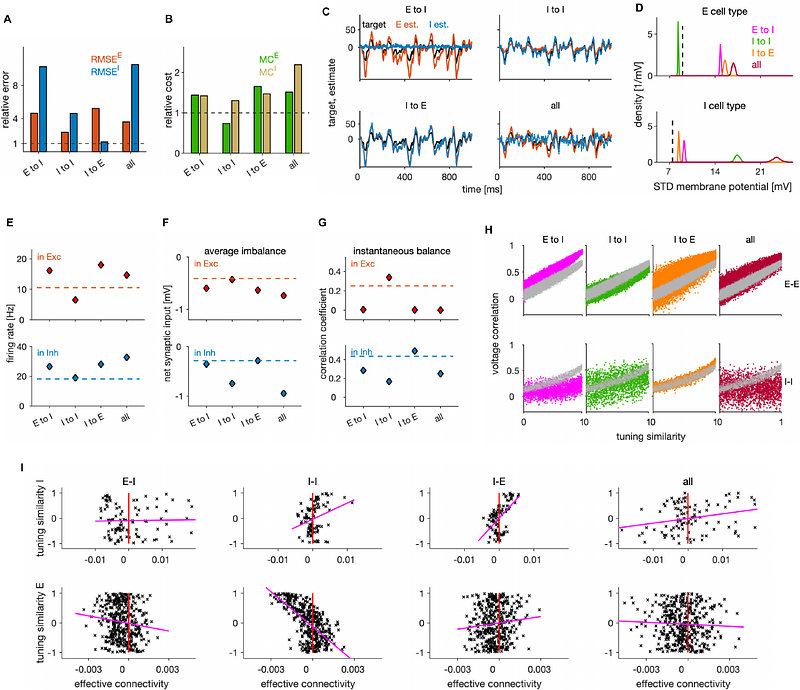Structure, dynamics, coding and optimal biophysical parameters of efficient excitatory-inhibitory spiking networks

Structure, dynamics, coding and optimal biophysical parameters of efficient excitatory-inhibitory spiking networks
Koren, V.; Blanco-Malerba, S.; Schwalger, T.; Panzeri, S.
AbstractThe principle of efficient coding posits that sensory cortical networks are designed to encode maximal sensory information with minimal metabolic cost. Despite the major influence of efficient coding in neuroscience, it has remained unclear whether fundamental empirical properties of neural network activity can be explained solely based on this normative principle. Here, we rigorously derive the structural, coding, biophysical and dynamical properties of excitatory-inhibitory recurrent networks of spiking neurons that emerge directly from imposing that the network minimizes an instantaneous loss function and a time-averaged performance measure enacting efficient coding. The optimal network has biologically-plausible biophysical features, including realistic integrate-and-fire spiking dynamics, spike-triggered adaptation, and a non-stimulus-specific excitatory external input regulating metabolic cost. The efficient network has excitatory-inhibitory recurrent connectivity between neurons with similar stimulus tuning implementing feature-specific competition, similar to that recently found in visual cortex. Networks with unstructured connectivity cannot reach comparable levels of coding efficiency. The optimal biophysical parameters include 4 to 1 ratio of excitatory vs inhibitory neurons and 3 to 1 ratio of mean inhibitory-to-inhibitory vs. excitatory-to-inhibitory connectivity that closely match those of cortical sensory networks. The efficient network has biologically-plausible spiking dynamics, with a tight instantaneous E-I balance that makes them capable to achieve efficient coding of external stimuli varying over multiple time scales. Together, these results explain how efficient coding may be implemented in cortical networks and suggests that key properties of biological neural networks may be accounted for by efficient coding.
